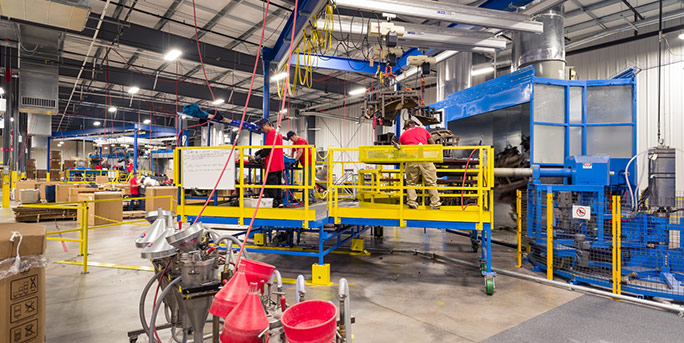Rotational molding, also known as Rotomoulding, is a manufacturing process that involves the creation of hollow plastic products. It is a popular technique used to produce a wide range of plastic items, including toys, containers, and industrial parts. This process is becoming more popular because it offers economic advantages and can produce high-quality products. In this blog post, we will take a closer look at rotational molding by discussing its advantages, the process, design considerations, commonly used materials, and applications.

Advantages of Rotational Molding
One of the biggest advantages of rotational molding is that it can create complex shapes and designs with consistent wall thickness. This process also eliminates the need for internal molds and allows manufacturers to create hollow and seamless parts that are resistant to stress and impact. Another advantage of rotational molding is the ability to add colors and other finishes directly into the mold, which results in a uniform finish. Additionally, the use of multiple molds in the manufacturing process means that you can streamline the production process by using interchangeable molds. This eliminates the need for a different set of molds for each part produced.
The Rotational Molding Process
The rotational molding process involves a few steps. First, the mold is loaded with a polymer powder that has been pre-measured for the specific part and its shape. Then the mold is heated and rotated in all directions, which causes the powder to melt and attach to the inside of the mold. Once the desired thickness of the material is achieved, and the mold is cooled down, the finished part is removed. This process can take anywhere from 10 to 30 minutes, depending on the size and complexity of the part.
Design Considerations for Rotational Molding
When designing a part for rotational molding, it is essential to keep certain factors in mind. One of these factors is the wall thickness. While the process can create consistent wall thickness, it is important to consider the shrinkage of the material during the cooling process. Also, designers need to consider that certain materials behave differently during the molding process, and some materials may require specific additives or coatings to improve durability. Moreover, designers need to keep in mind the possibility of warpage and uneven distortion due to the process, to ensure that its quality meets expectations.
Commonly Used Materials for Rotational Molding
Polyethylene and Polypropylene are the two most commonly used materials in rotational molding. Both materials are known for their high tensile strength and impact resistance which makes them ideal for durable products like kayaks, playground equipment, and automotive parts. Other materials like PVC (polyvinyl chloride), Polystyrene, and Nylon are also used in rotational molding but for different reasons. For instance, PVC and Polystyrene are used to create unique finishes, while Nylon is used for its ability to withstand high temperatures.
Applications of Rotational Molding
Rotational molding is instrumental in the production of durable and high-quality products for many industries, including automotive, medical, and sports. In the automotive industry, rotational molding is used to produce fuel tanks, fenders, and bumpers. In the sports industry, rotational molding is used to produce kayaks, skateboards, and protective equipment. In the Medical industry, rotational molding is used to produce prosthetics and other equipment. The applications for Rotational molding are vast, and there is no limit to the possibilities.
In conclusion, rotational molding is an essential manufacturing process that produces high-quality, consistent, and durable plastic products. It offers several advantages that make this technique more economical and efficient compared to other manufacturing processes. Design considerations are essential to ensure a quality-produced product that meets client expectations, and there are various material options to select. Rotational molding has a wide range of applications across multiple industries, and it is continuously evolving to meet the changing needs of the market. This process has certainly proven its worth in the world of manufacturing.
 icons at the top right corner of the subsection.
icons at the top right corner of the subsection.